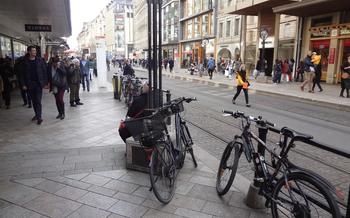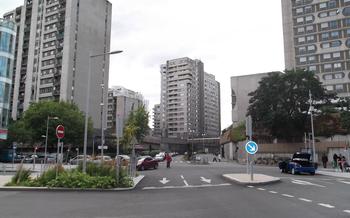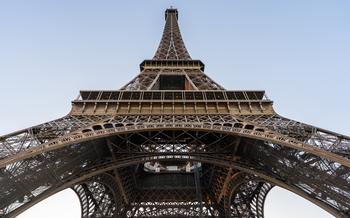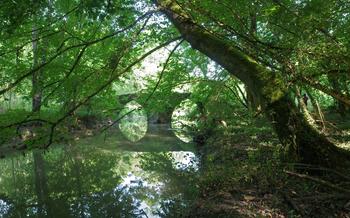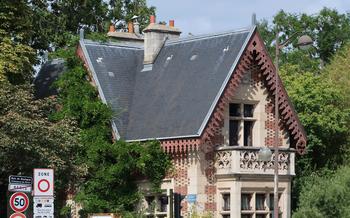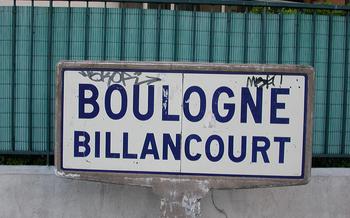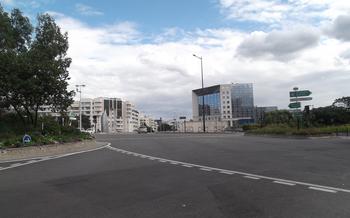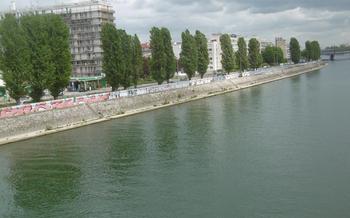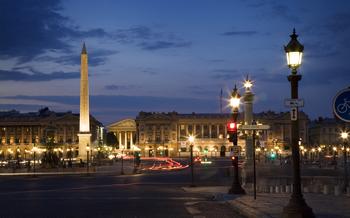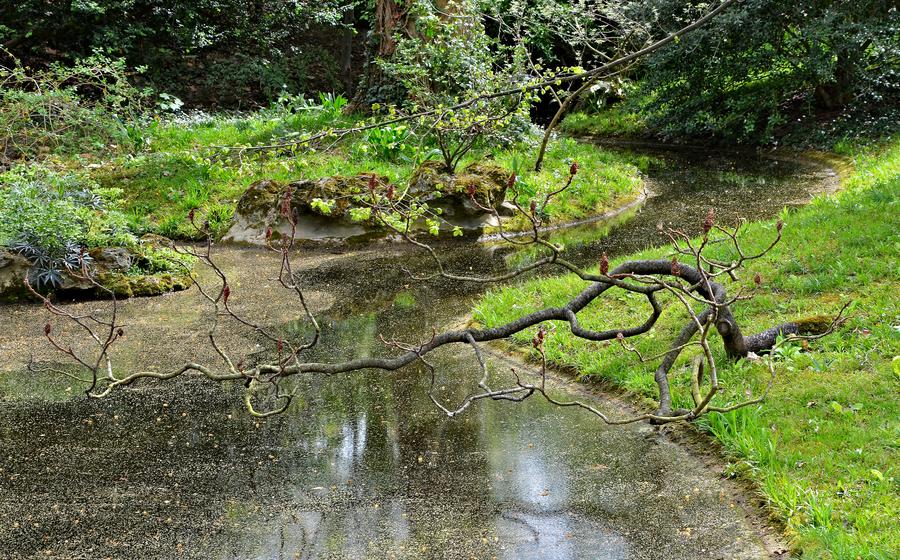
Albert Kahn Museum and Gardens
- A Stroll in the Albert Kahn Museum and Gardens
- Albert Kahn's Legacy
- The Gardens: A Journey Through Time
- The Japanese Garden: A Haven of Peace
- The Arboretum: A Treasure Trove of Plant Life
- The Albert Kahn Museum: A Window on the World
- Albert Kahn's Archives: A Priceless Legacy
- The Archives' Impact on Photography:
- Albert Kahn's Commitment to Peace
- Albert Kahn and Boulogne-Billancourt
- Practical Information:
- Getting to the Albert Kahn Museum and Gardens
- Nearby Attractions
- Suggested Itineraries
- Insider Tip: Cherry Blossom Season
A Stroll in the Albert Kahn Museum and Gardens
In the heart of Boulogne-Billancourt, nestled between the Seine River and the Bois de Boulogne, lies a hidden gem that transports visitors to a world of beauty, tranquility, and cultural discovery. The Albert Kahn Museum and Gardens offer a unique and immersive experience, inviting you to step into the visionary world of Albert Kahn, a remarkable banker, philanthropist, and peace advocate who dedicated his life to promoting understanding and harmony among nations.
Albert Kahn's vision was to create a place where people from all walks of life could come together, learn from each other, and appreciate the diverse wonders of the world. Through his travels and philanthropic efforts, he assembled an extraordinary collection of gardens, architectural treasures, and artifacts that reflect the richness and diversity of human cultures.
Enter the gates of the Albert Kahn Museum and Gardens, and you will be greeted by an enchanting landscape that seamlessly blends natural beauty with architectural elegance. Stroll along the winding paths that lead you through different garden styles, each representing a distinct era or region. From the formal symmetry of the French garden to the naturalistic charm of the English garden, and the serene tranquility of the Japanese garden, every corner of these gardens holds a unique surprise.
Amidst the lush greenery, discover hidden architectural gems that showcase Albert Kahn's passion for preserving cultural heritage. The majestic Château de Gentilly, with its grand façade and ornate interiors, stands as a testament to French architectural prowess. The charming Japanese teahouse, nestled amidst the cherry blossom trees, invites you to experience the serenity of traditional Japanese culture.
As you wander through the gardens, take a moment to admire the museum's diverse collections, which include paintings, sculptures, and decorative arts from around the world. These carefully curated pieces offer a glimpse into the artistic traditions of different cultures, enriching your visit with a deeper understanding of global heritage.
Albert Kahn's Legacy
Albert Kahn was a remarkable figure who left an indelible mark on the world. His multifaceted life encompassed banking, philanthropy, photography, and travel. Driven by a deep passion for promoting peace and understanding, he dedicated his wealth and resources to various initiatives aimed at bridging cultural divides and fostering global harmony.
Kahn's commitment to peace was evident in his role as a philanthropist. He generously supported international organizations and peace conferences, advocating for dialogue and cooperation as means of resolving conflicts. His belief in the power of education and cultural exchange led him to establish the Archives de la Planète, a vast collection of autochrome photographs documenting people, places, and cultures from around the world. This unique archive was intended to serve as a tool for promoting understanding and appreciation among nations.
Kahn's passion for photography fueled his desire to capture the world's beauty and diversity. He traveled extensively, documenting his journeys through the lens of his camera. His pioneering use of autochrome technology, an early form of color photography, allowed him to create stunning images that brought distant lands and cultures to life. Kahn's photographs not only showcased his artistic talent but also reflected his deep respect for humanity and his commitment to preserving cultural heritage.
Through his philanthropic endeavors, photography, and unwavering dedication to peace, Albert Kahn left a lasting legacy as a visionary banker, philanthropist, and peacebuilder. His contributions to the world continue to inspire and guide efforts to promote understanding, cooperation, and harmony among nations.
The Gardens: A Journey Through Time
Albert Kahn's gardens are a testament to his love of nature and his desire to create a place of beauty and tranquility. The gardens are divided into four distinct sections, each with its own unique character.
The French Garden: Symmetry and Elegance The French garden is a masterpiece of symmetry and elegance. Perfectly manicured hedges, colorful flower beds, and graceful statues adorn this formal garden. The focal point of the French garden is a large fountain, which cascades into a serene pool.
The English Garden: Naturalism and Romanticism In contrast to the formal French garden, the English garden is a celebration of naturalism and romanticism. Winding paths lead visitors through a landscape of rolling hills, lush meadows, and sparkling streams. The English garden is home to a variety of trees and flowers, including roses, azaleas, and rhododendrons.
The Japanese Garden: Serenity and Contemplation The Japanese garden is a haven of peace and contemplation. Traditional elements such as a teahouse, lanterns, and torii gates create a serene atmosphere. The garden is designed to represent the four seasons, with each season represented by different plants and flowers.
The Vosges Forest: A Tribute to Albert Kahn's Native Region The Vosges forest is a tribute to Albert Kahn's native region. This section of the garden features trees and plants that are native to the Vosges Mountains. The forest is a popular spot for visitors to relax and enjoy the natural beauty of the surroundings.
The Japanese Garden: A Haven of Peace
Nestled within the Albert Kahn Museum and Gardens lies a hidden gem that transports visitors to the serene landscapes of Japan. Inspired by Albert Kahn's travels to the Far East, the Japanese garden is a masterpiece of traditional design, offering a tranquil oasis amidst the bustling city.
As you step into the garden, you are greeted by a serene atmosphere, with meandering paths leading you through carefully arranged landscapes. Traditional elements such as a teahouse, lanterns, and torii gates add to the authenticity of the setting, creating a sense of harmony and tranquility.
The garden's layout is steeped in symbolism, with each element carefully positioned to represent different aspects of Japanese culture and philosophy. Water features, rocks, and plants are arranged in a way that evokes a sense of balance and serenity, inviting visitors to slow down and appreciate the beauty of nature.
During the cherry blossom season, the Japanese garden transforms into a magical spectacle. The trees burst into bloom, painting the landscape in delicate shades of pink and white. Visitors can stroll beneath the cherry blossoms, admiring their fleeting beauty and soaking in the enchanting atmosphere.
Throughout the year, the Japanese garden hosts various activities and events that celebrate Japanese culture and traditions. From tea ceremonies and calligraphy workshops to traditional music performances, there are plenty of opportunities to immerse yourself in the rich heritage of Japan.
The Arboretum: A Treasure Trove of Plant Life
The Albert Kahn Museum and Gardens boasts a remarkable arboretum, a living treasure trove of plant life that spans over four hectares. A testament to Albert Kahn's passion for botany and his desire to create a diverse and educational space, the arboretum is home to a vast collection of rare and exotic species from around the world.
The arboretum is meticulously organized into different sections, each showcasing a specific theme or region. Visitors can wander through the Mediterranean garden, with its fragrant lavender and olive trees, or explore the North American section, featuring majestic sequoias and vibrant azaleas. The Himalayan garden transports visitors to the foothills of the Himalayas, with its rhododendrons, magnolias, and delicate primulas.
In addition to its aesthetic beauty, the arboretum serves as a living laboratory for scientific research and education. Botanists and researchers from around the world come to study the diverse plant collections, contributing to our understanding of plant biology and conservation. Educational programs and workshops are also offered to visitors of all ages, fostering a deeper appreciation for the natural world.
The arboretum is not just a collection of plants; it is a sanctuary for biodiversity and a symbol of Albert Kahn's commitment to environmental stewardship. The museum's conservation efforts and sustainable landscaping practices ensure that future generations can continue to enjoy and learn from this extraordinary treasure.
The Albert Kahn Museum: A Window on the World
The Albert Kahn Museum, housed within the estate, is a treasure trove of art and cultural artifacts that reflect Albert Kahn's diverse interests and global perspective. The museum's permanent exhibitions showcase his remarkable collection of photographs, paintings, and decorative arts, offering visitors a glimpse into the world as seen through his lens.
The museum's photography collection is particularly noteworthy, featuring over 72,000 autochrome plates, a revolutionary color photography process that Kahn was among the first to adopt. These vibrant images, captured by Kahn's team of photographers during their travels around the world, provide a captivating window on the people, places, and cultures of the early 20th century.
In addition to the permanent exhibitions, the museum also hosts temporary exhibitions that explore diverse cultures, themes, and artistic movements, often drawing on the vast resources of the Albert Kahn Archives. Educational activities for all ages, including workshops, lectures, and guided tours, are regularly organized to enhance visitors' understanding and appreciation of the museum's collections.
The Albert Kahn Museum is not merely a repository of artifacts; it is a dynamic space that continues to fulfill Kahn's vision of promoting cross-cultural understanding and fostering a more peaceful world. Through its exhibitions, educational programs, and commitment to preserving Albert Kahn's legacy, the museum serves as a vital resource for researchers, historians, and anyone seeking to broaden their horizons and deepen their understanding of the world's diverse cultures.
Albert Kahn's Archives: A Priceless Legacy
Albert Kahn's enduring legacy includes an invaluable collection of autochrome photographs, the largest of its kind in the world. These remarkable images, captured using a revolutionary color photography technique, document people, places, and cultures from the early 20th century with unparalleled accuracy and vibrancy.
Kahn's archives provide a captivating glimpse into a bygone era, offering a rich visual record of diverse societies and landscapes. Through his photographs, we can witness the bustling streets of cities, the serene beauty of rural villages, and the majestic grandeur of natural wonders. Kahn's keen eye for detail and his commitment to preserving cultural heritage make his archives an invaluable resource for researchers, historians, and anyone interested in understanding the world as it was over a century ago.
The Albert Kahn Museum, dedicated to preserving and promoting Kahn's legacy, has undertaken the ambitious task of digitizing and restoring these fragile glass plates. This painstaking process ensures that future generations can continue to appreciate and learn from this extraordinary collection. Through exhibitions, publications, and online resources, the museum is actively sharing Kahn's work with a global audience, fostering a deeper understanding of our collective past and inspiring new generations of photographers and artists.
The Archives' Impact on Photography:
Albert Kahn's pioneering use of autochrome technology, a revolutionary color photography process, had a profound impact on the art of photography. His commitment to documenting the world in color allowed him to capture the beauty and diversity of cultures and landscapes in a way that had never been seen before.
Kahn's work inspired a generation of photographers to embrace color photography, and his influence can still be seen in the work of contemporary photographers who use color as a powerful tool for storytelling and artistic expression.
The archives' collection of autochrome photographs has become a valuable resource for researchers and historians, providing a unique glimpse into the world as it existed at the turn of the 20th century. The archives have also been instrumental in preserving and promoting the art of photography, through exhibitions, publications, and educational programs.
The Albert Kahn Museum and Gardens stand as a testament to Albert Kahn's enduring legacy as a pioneer of photography and a tireless advocate for peace and understanding. His work continues to inspire and inform, and his archives remain an invaluable resource for anyone interested in the history of photography, the diversity of cultures, or the pursuit of peace and harmony among nations.
Albert Kahn's Commitment to Peace
Albert Kahn was a passionate advocate for peace and understanding among nations. He believed that education and cultural exchange were essential tools for promoting peace and preventing conflict. He supported numerous international organizations and peace conferences, and in 1919, he established the Archives de la Planète, a collection of photographs, films, and other documents from around the world, which he hoped would foster understanding and cooperation among different cultures.
Kahn's commitment to peace was rooted in his own experiences. He had witnessed the horrors of war firsthand during the Franco-Prussian War, and he was determined to do everything in his power to prevent future conflicts. He believed that by promoting understanding and empathy between people from different cultures, he could help to create a more peaceful world.
Kahn's legacy as a peacebuilder and humanitarian continues to inspire people around the world. His work reminds us that peace is not simply the absence of war, but an active process that requires dialogue, cooperation, and understanding. His Archives de la Planète remains a valuable resource for researchers and educators who are working to promote peace and understanding in our world.
Albert Kahn and Boulogne-Billancourt
Albert Kahn's deep connection to Boulogne-Billancourt began in 1895 when he purchased a plot of land in the city to build his home and establish his foundation. He chose Boulogne-Billancourt as it offered him the space and tranquility he needed for his ambitious projects, while still being close to the cultural and intellectual hub of Paris. Over the years, Kahn's work had a profound impact on the development of Boulogne-Billancourt. His museum and gardens became a major attraction, drawing visitors from around the world. His commitment to peace and understanding also resonated with the city's residents, who embraced his vision of a more harmonious and just world.
Today, Boulogne-Billancourt is proud to be the home of the Albert Kahn Museum and Gardens. The city is committed to preserving and promoting Kahn's legacy, recognizing it as a vital part of its cultural heritage. The museum and gardens continue to inspire and educate visitors, offering a unique glimpse into the life and work of a remarkable man who dedicated his life to promoting peace and understanding through the power of images and education.
Practical Information:
- Address: 10-14 Rue du Port, 92100 Boulogne-Billancourt, France
- Opening Hours: Tuesday to Sunday, 10 am to 6 pm; closed on Mondays and public holidays.
- Admission Fees: Full price 7€, Concessions (students, seniors, unemployed) 5€, Free admission for children under 18, Family ticket (2 adults + 2 children) 18€.
- Guided Tours: Guided tours of the museum and gardens are available in French, English, and Spanish. Advance booking is recommended, especially for groups.
- Educational Programs: The Albert Kahn Museum offers a range of educational programs and workshops for schools and groups. These programs focus on various themes related to the museum's collections and Albert Kahn's work.
- Accessibility: The museum and gardens are wheelchair accessible. Wheelchairs and strollers can be borrowed from the museum's reception desk.
- Facilities and Amenities: The museum has a gift shop, a café, and a restaurant. Lockers are available for visitors to store their belongings. Picnic areas are available in the gardens.
Getting to the Albert Kahn Museum and Gardens
The Albert Kahn Museum and Gardens are conveniently located in Boulogne-Billancourt, a suburb just west of Paris. Reaching the museum is a breeze, whether you choose to travel by public transportation or by car.
Public Transportation
The most convenient way to reach the museum by public transportation is via the Paris Métro. Take Line 10 and alight at the Boulogne-Jean Jaurès station. From there, it's just a short walk to the museum. Alternatively, you can take bus 123 from the Pont de Saint-Cloud stop, which will drop you right outside the museum's entrance.
Driving
If you prefer to drive, the museum offers ample parking facilities. Simply follow the signs for the Musée Albert Kahn and you'll be directed to the designated parking area. Please note that parking fees apply.
Directions and Maps
To make your journey even smoother, we recommend using a map app or GPS device to navigate to the museum. Simply enter the address 10-14 Rue du Port, 92100 Boulogne-Billancourt and you'll be guided to the museum's doorstep.
No matter how you choose to travel, getting to the Albert Kahn Museum and Gardens is a hassle-free experience. So sit back, relax, and enjoy your journey to this beautiful and inspiring destination.
Nearby Attractions
Apart from the Albert Kahn Museum and Gardens, Boulogne-Billancourt offers a wealth of other attractions to explore. The city is home to several museums and cultural institutions, including the Musée des Années 30, which showcases art and design from the 1930s, and the Musée de la Seine, which delves into the history of the Seine River and its impact on the city.
For those seeking outdoor recreation, Boulogne-Billancourt offers several parks and green spaces, including the Parc de Saint-Cloud, with its stunning views of Paris and the Eiffel Tower, and the Parc de l'Île Seguin, a former industrial site transformed into a vibrant urban park.
Boulogne-Billancourt is also a great place to indulge in shopping and dining. The city boasts a variety of boutiques, shops, and restaurants, offering everything from traditional French cuisine to international flavors. For a unique shopping experience, visit the Marché de Billancourt, a vibrant flea market held every weekend.
When it comes to accommodation, Boulogne-Billancourt offers a range of options to suit every budget and preference. From charming bed and breakfasts to modern hotels, there's something for every traveler.
Insider tip: For a truly authentic experience, try one of the many local restaurants in Boulogne-Billancourt. Ask for recommendations from locals or your hotel concierge to discover hidden gems that serve delicious French cuisine.
Suggested Itineraries
One-day itinerary:
- Start your day with a leisurely stroll through the gardens, taking in the beauty of the different landscapes.
- Visit the Albert Kahn Museum to explore the permanent and temporary exhibitions.
- Enjoy a picnic lunch in the gardens or at one of the nearby cafes.
- Take a guided tour of the museum and gardens to learn more about Albert Kahn's life and work.
- End your day with a visit to the Japanese garden, especially during the cherry blossom season, for a truly magical experience.
Two-day itinerary:
- Dedicate your first day to exploring the Albert Kahn Museum and Gardens.
- On your second day, venture beyond the museum grounds to discover other attractions in Boulogne-Billancourt.
- Visit the Musée des Années 30, which showcases the city's rich art deco heritage.
- Explore the Parc de Saint-Cloud, a beautiful public park with stunning views of the Seine River.
- Enjoy a leisurely walk along the banks of the Seine, taking in the sights and sounds of the city.
Tips for customizing your itinerary:
- If you have limited time, focus on the highlights of the Albert Kahn Museum and Gardens, such as the Japanese garden and the Archives de la Planète.
- If you are interested in photography, spend more time exploring the museum's photography collection and the Archives de la Planète.
- If you are traveling with children, make sure to check out the educational programs and activities offered by the museum and gardens.
Insider Tip: Cherry Blossom Season
For an unforgettable experience, plan your visit to the Albert Kahn Museum and Gardens during the cherry blossom season, typically in April. The Japanese garden transforms into a magical spectacle as the cherry trees burst into bloom, creating a breathtaking display of pink and white blossoms. Stroll beneath the flowering branches, admire the vibrant colors, and capture the essence of this fleeting natural wonder. The cherry blossom season is a cherished time to celebrate the beauty of nature and immerse yourself in the tranquility of the Japanese garden.
